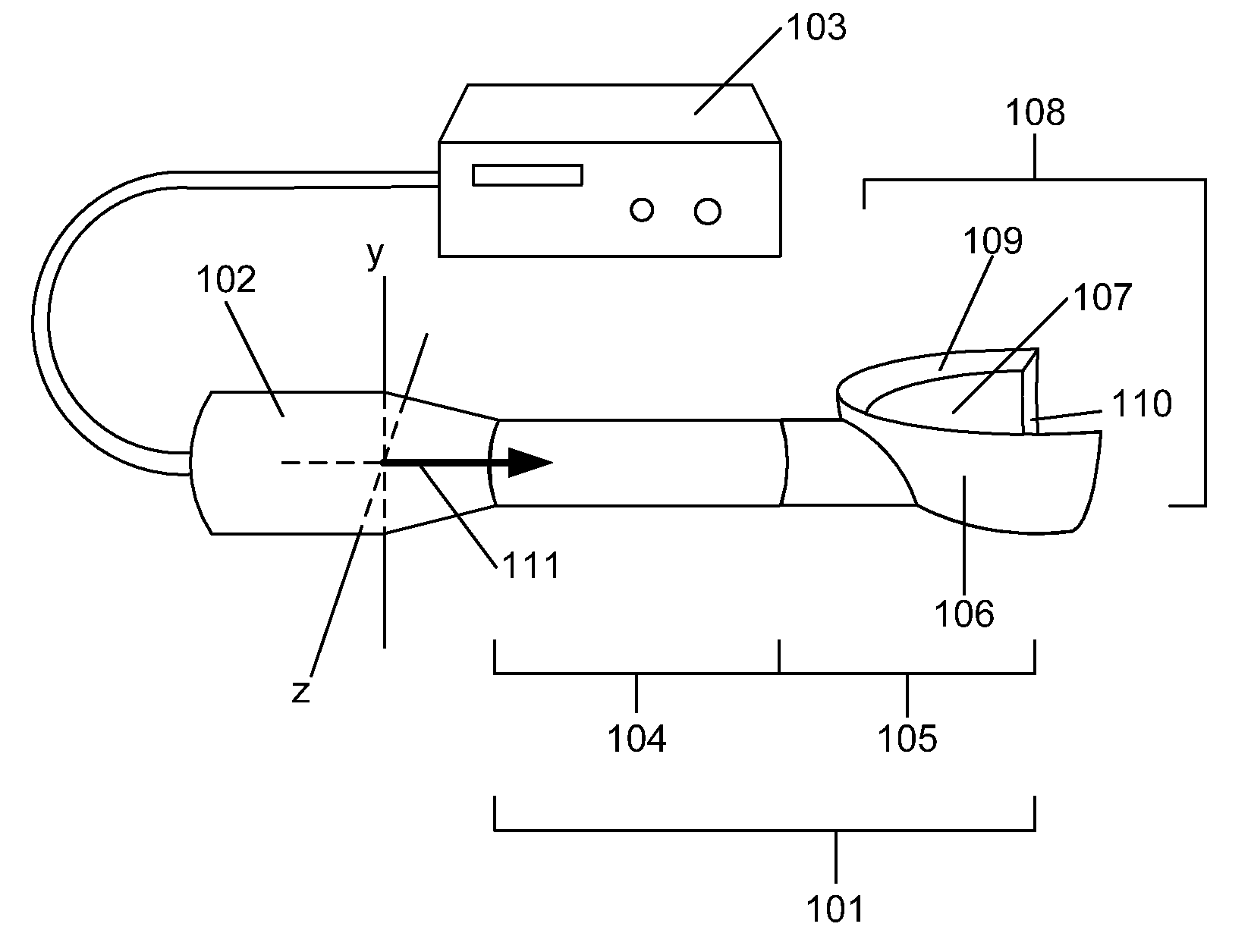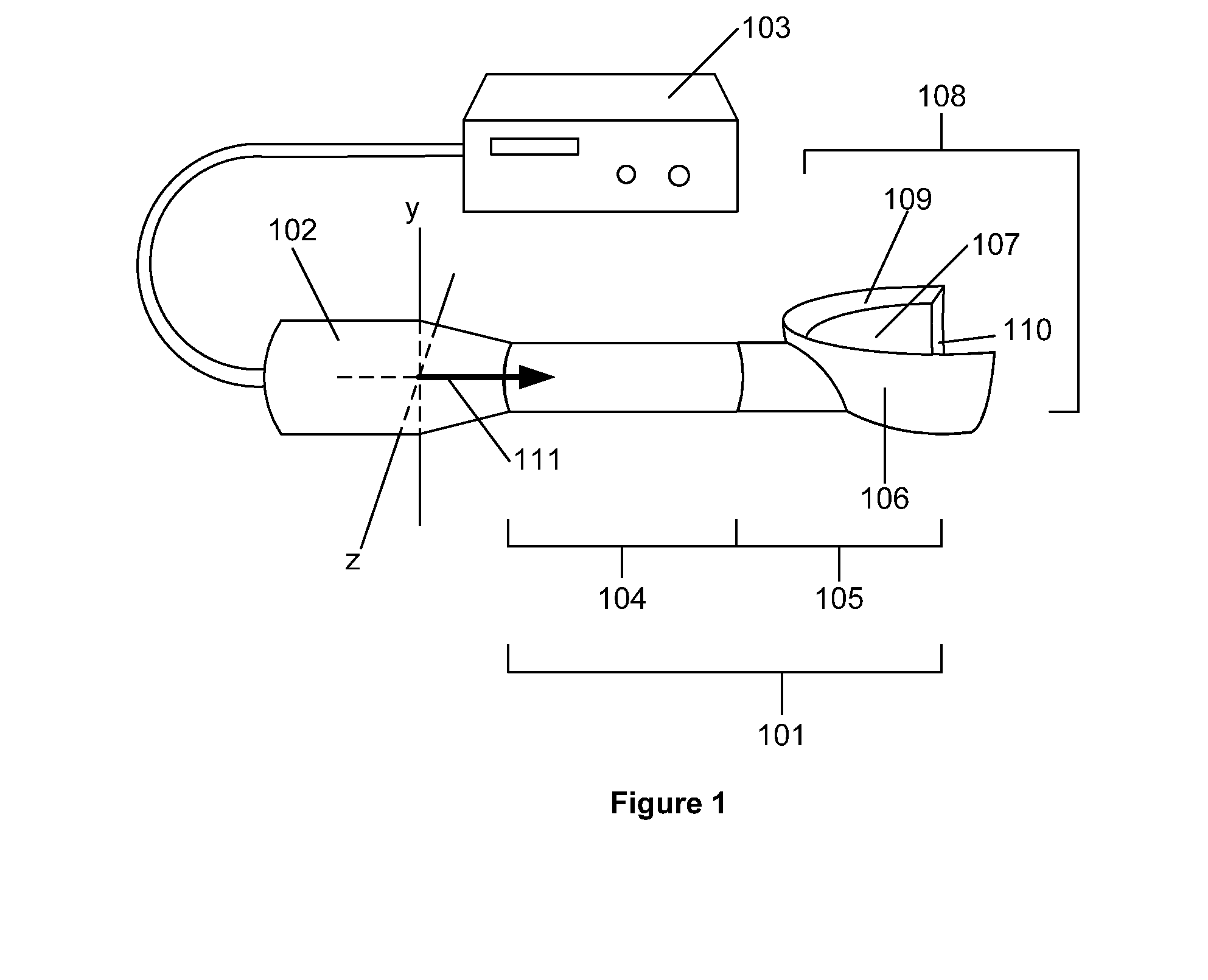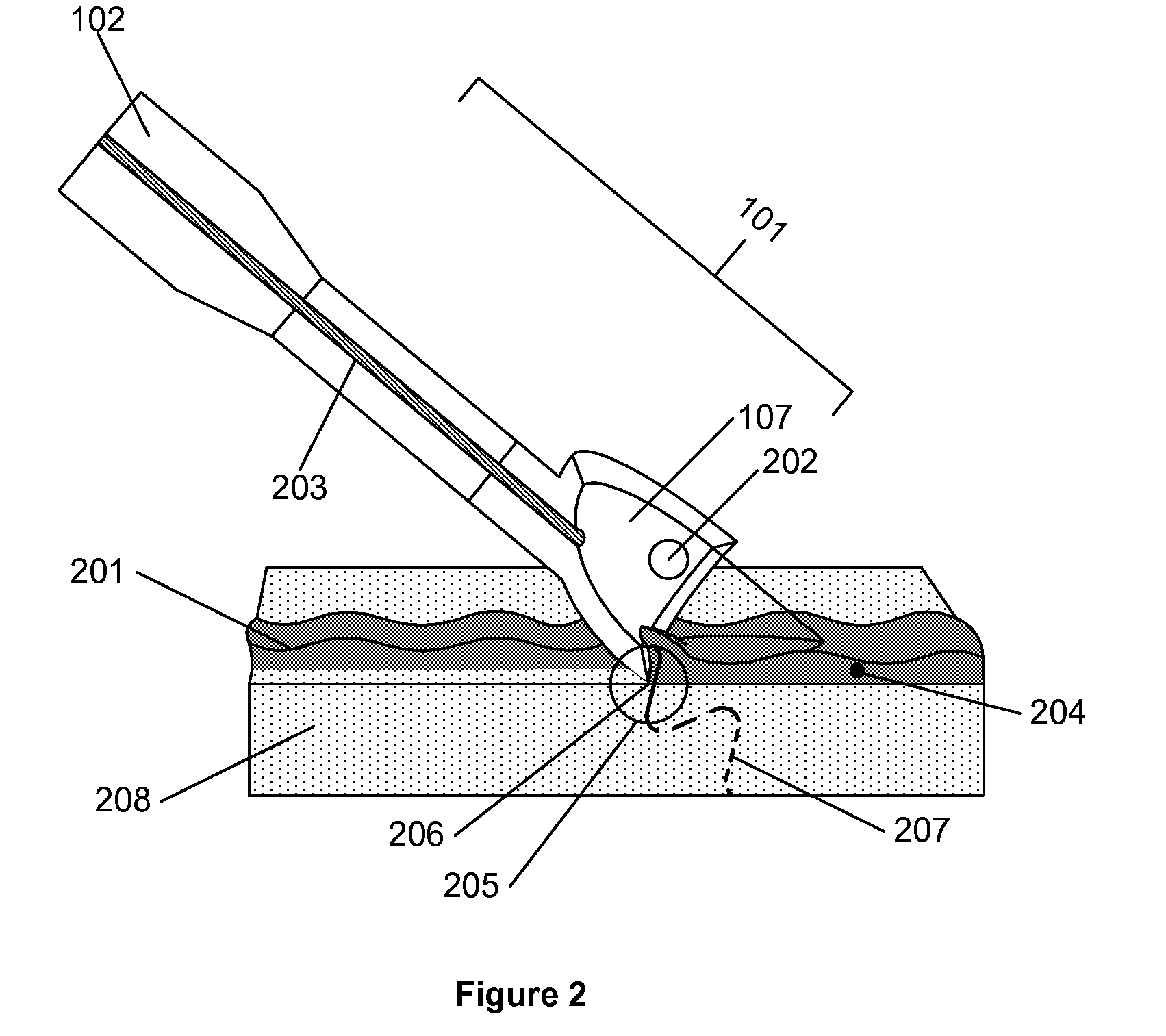[0014]The double-delivery ultrasound exposes one point and / or region of the wound to
ultrasound energy and the material about the point of
dissection to ultrasound vibrations. Collectively, the double-delivery's dual
exposure elicits an effect allowing for relatively pain-free debridement. Exposing the wound to one of the ultrasound deliveries without the other will not allow for relatively pain-free debridement. Consequently, it is the combined effects elicited by the delivery of
ultrasound energy and ultrasound vibrations at differing points that allows for relatively pain-free
wound debridement. One delivery does not necessarily have to precede the other. Consequently, the
exposure to ultrasound may occur before, subsequently to, and / or simultaneously with the
exposure to vibrations. Because it is the additive effect elicited by both deliveries that allows for relatively pain-free
dissection with a
cutting edge, the second delivery should occur before the effects elicited by the first delivery have dissipated. Likewise, dissection of the material to be debrided should occur while the effects elicited from the double-delivery are in place.
[0016]The other delivery of the double-delivery exposes material about the point of dissection to ultrasound vibrations. Exposing the material to ultrasound vibrations induces vibrations within the material. Confining the vibrations induced may enhance the effects produced by this delivery. One possible manner of inducing vibrations within a confined region about the point of dissection is to
expose the material about the point of dissection to ultrasound vibrations released from an ultrasound horn having a consistent and narrow
diameter. In combination or in the alternative. vibrations may be induced within a confined region about the point of dissection by exposing the material about the point of dissection to concentrated ultrasound vibrations. Concentrating ultrasound vibrations can be accomplished by inducing an ultrasound horn with a larger cross section at its proximal end than its distal end to vibrate. As the vibrations travel from the horn's wide proximal end to the narrow distal end, the amplitude of the vibrations increase while their frequency remains constant. Placing the narrow distal end in contact with the material about the point of dissection exposes this confined region of the tissue to ultrasound vibrations. Due to this direct contact exposure, vibrations are induced in the confined region about the point of dissection. Accordingly, exposing the wound to concentrated ultrasound vibrations induces vibrations within a confined region encompassing the point of dissection.
[0018]While the effect elicited by the double-delivery is in place, the material to be debrided is dissected with a cutting edge. Any structure containing an edge and / or point sufficiently fine as to enable dissection may be used as the cutting device. Accordingly, a horn utilized to
expose the material about the point of dissection to ultrasound vibrations may be used as the cutting device if it contains a sufficiently fine edge and / or point. An
advantage of using the horn as the cutting devices is that it simplifies procedure. Possessing a structure sufficiently sharp to enable dissection, the horn may be used to
expose the material about the point of dissection to ultrasound vibrations and then used to dissect the material to be debrided. Consequently, the practitioner debriding the wound need not change instruments as he transitions between operations of the procedure. The procedure could be further simplified by utilizing the same structure of a horn to expose the material about the point of dissection to ultrasound vibrations and simultaneously dissect the material to be debrided. According, the practitioner would be able to perform two operations of the procedure with a single movement. It should be noted that the vibrations induced in the cutting edge of a horn may increase the cutting edges ability to dissect tissue, allowing a blunter edge to be utilized.
[0019]The effects elicited by the double-delivery of ultrasound reduce the patient's physiological
perception pain while the wound is debrided. However, the
perception of pain also involves a psychological component. For instance, when a patient believes something will hurt, he may perceive the slightest
sensation as painful. Consequently, if the patient believes debridement will be painful he will perceive pain though the double-delivery has diminished the physiological
perception of pain. Of course, comforting words by the
medical practitioner may reduce the patient's expectation of pain. Despite being comforted by the practitioner, the medical environment in which the invention is practiced may still make the patient anxious. Unable to overcome his
anxiety, the patient may still perceive pain. However, due to the physiological effects elicited by the double-delivery the pain perceived will be primarily psychological. Accordingly, the present inventions allows for relatively pain-free
wound debridement.
 Login to View More
Login to View More  Login to View More
Login to View More 


